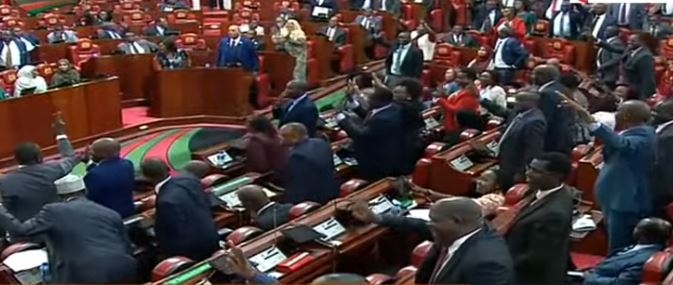
Nairobi Water says timely bill settlement is essential for maintaining service delivery in the process of treating water, repairing aging pipelines, and expanding supply lines to the fast-growing neighbourhoods.
Nairobi currently relies on a complex network of dams, treatment works and distribution lines, much of which requires continuous reinvestment to keep pace with population growth and demand.
The Company’s five-year strategic plan outlines a broader vision that includes improved customer service, modern billing systems and expanded supply coverage. Financial sustainability remains a central pillar, as Nairobi’s evolving urban landscape demands more resilient infrastructure and proactive maintenance.
The Company recently realigned its Regional boundaries in line with the Nairobi County Administrative boundaries and increased the number of regions from seven to nine.

The new business centres are: Westlands Region, Dagoretti Region, Langata Region, Roysambu Region, Central Region, Upper Embakasi, Lower Embakasi, Kasarani Region and Informal Settlement Region. The Informal Settlements Region focuses on pro-poor initiatives to ensure access to water and sanitation in low-income areas.
The Ag. Managing Director, Martin Nang’ole, says the expansion of the regional business centres is informed by the need to decentralize services.
“We want to take our services closer to the customers as well as ensure seamless access to our offices, enhance efficiency in both technical and commercial operations, improve response time to customer resolutions as well as enhance “Know your Customer” principle for Non-Revenue Water (NRW) reduction,” he states.
According to recent operational updates, the Company is implementing projects aimed at improving service reliability, reducing water losses, and modernising its systems. These efforts include enhanced leak-detection technology, upgraded metering, and district metered areas designed to curb non-revenue water, a long-standing challenge caused by leaks, vandalism and illegal connections.
Among the technological advancements being harnessed is the Geographic Information System (GIS), which plays a crucial role in mapping and managing water supply networks. This system enables monitoring and pinpoint problem areas, streamlining repair and maintenance efforts.
The Ag. Managing Director, Martin Nango’le, say service delivery interventions require sustained funding, and unpaid bills continue to limit the company’s ability to operate at full efficiency. “Every shilling that goes unremitted affects our capacity to supply Nairobi with clean and reliable water. Reductions in revenue have a direct impact on maintenance schedules and network improvement plans,” he notes.

Account holders can also check their bill balance, submit a self-meter reading, verify staff identities, or request a water bowser by dialing *260#. With self-meter reading, the customers can now self-read their meters after the 15th day of every month and send the Company the readings for updated billing.
Emerging data shows that Nairobi’s water demand continues to outstrip available supply, making efficient distribution and reduced wastage central to managing the shortfall.
Nairobi City County has four sources of water namely, Thika , Sasumua , Ruiru Dams and Kikuyu Springs.
The water is treated at Kikuyu Springs, Kabete and Sasumua Treatment Plants as well as Ng'ethu Treatment Plant. The four have an installed maximum daily production capacity of 440 million, 61 million, 20.6 million and 4 million litres respectively. This totals the daily maximum design production capacity of 525.6 million litres per day against a daily demand of 930 million litres.
To further enhance water supply to the City, the Company recently started distributing additional water from Karemenu Dam - Kiambu reservoir system with approximately 23,000 M3 per day from the Northern Collector Tunnel / Kabete reservoir system approximately 140,000 M3 per day.

The Ag. MD stated that investments in metering, pipeline replacement and pressure management are underway, but the pace of these upgrades depends heavily on customers keeping their accounts current.
He also added the roll out of a Customer Portal to share concerns is being rolled out where they can report any concerns and upload a picture and location. This is all aimed at improving services and the customer experience.
Residents are also being urged to guard against illegal connections, which distort water pressure across neighbourhoods and expose households to potential contamination. Such activities contribute significantly to non-revenue water, one of the biggest operational losses for the company.
The Company also faces significant challenges in bill payment collection, with a major portion of attributed to inaccessible meters, meter tampering, and illegal connection. Inaccessible meters, caused by locked gates, and inaccessible properties, prevent accurate readings, leading to estimated bills and lost revenue.














